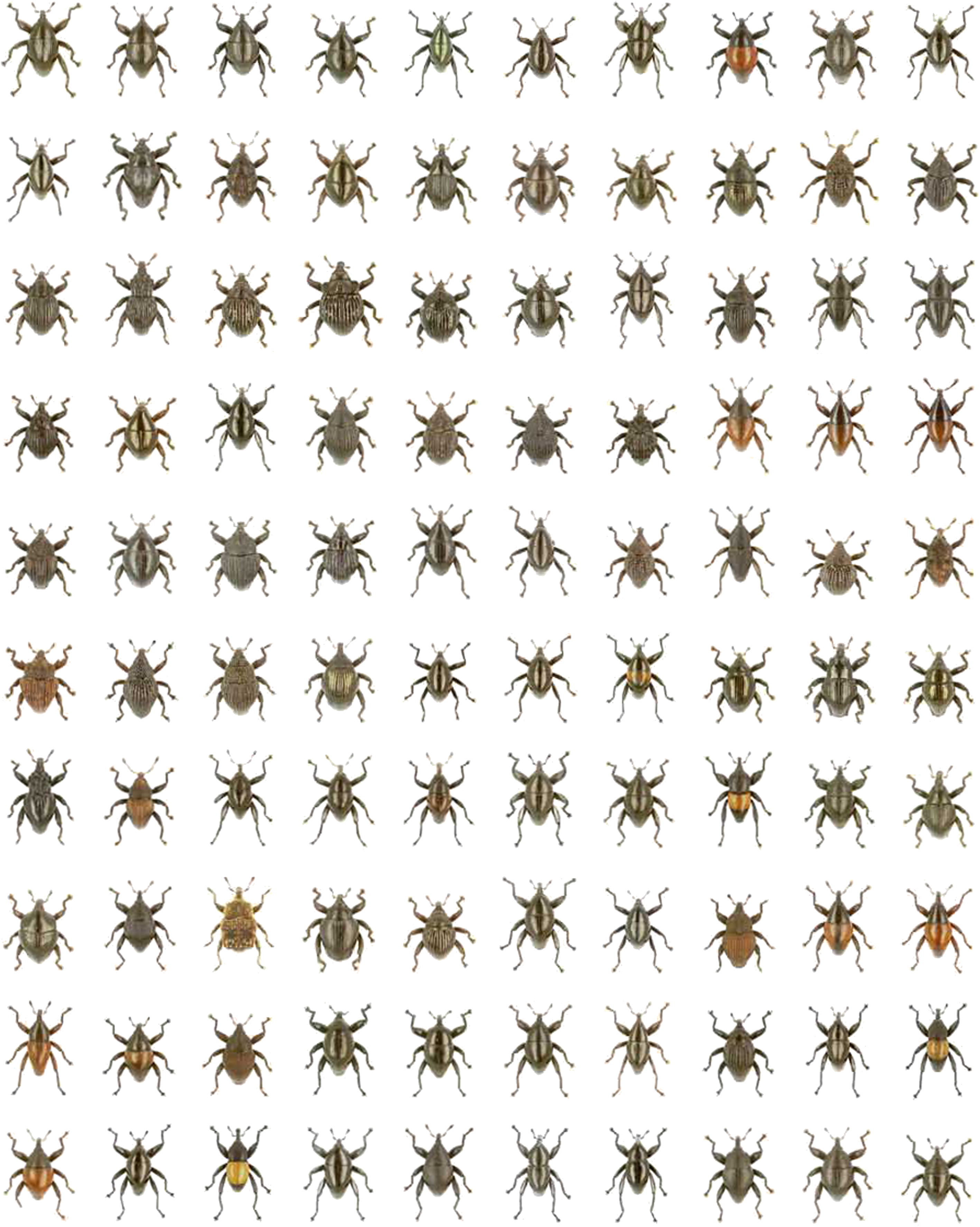|
Australian Entomologist
The ''Australian Entomologist'' is a peer-reviewed scientific journal published quarterly by the Entomological Society of Queensland. The editor in chief is David Hancock. It was established in 1974 as ''The Australian Entomological Magazine'' and obtained its current title in 1993. See also * ''Australian Journal of Entomology ''Austral Entomology'' (formerly ''Australian Journal of Entomology'') is a Peer review, peer-reviewed scientific journal published by John Wiley & Sons, Wiley on behalf of the Australian Entomological Society. The editor-in-chief is Dr Richard V ...'' External links * Entomology journals and magazines Publications established in 1974 Quarterly journals English-language journals Academic journals published by learned and professional societies {{zoo-journal-stub ... [...More Info...] [...Related Items...] OR: [Wikipedia] [Google] [Baidu] |
Entomology
Entomology () is the scientific study of insects, a branch of zoology. In the past the term "insect" was less specific, and historically the definition of entomology would also include the study of animals in other arthropod groups, such as arachnids, myriapods, and crustaceans. This wider meaning may still be encountered in informal use. Like several of the other fields that are categorized within zoology, entomology is a taxon-based category; any form of scientific study in which there is a focus on insect-related inquiries is, by definition, entomology. Entomology therefore overlaps with a cross-section of topics as diverse as molecular genetics, behavior, neuroscience, biomechanics, biochemistry, systematics, physiology, developmental biology, ecology, morphology, and paleontology. Over 1.3 million insect species have been described, more than two-thirds of all known species. Some insect species date back to around 400 million years ago. They have many kinds of int ... [...More Info...] [...Related Items...] OR: [Wikipedia] [Google] [Baidu] |
Peer Review
Peer review is the evaluation of work by one or more people with similar competencies as the producers of the work ( peers). It functions as a form of self-regulation by qualified members of a profession within the relevant field. Peer review methods are used to maintain quality standards, improve performance, and provide credibility. In academia, scholarly peer review is often used to determine an academic paper's suitability for publication. Peer review can be categorized by the type of activity and by the field or profession in which the activity occurs, e.g., medical peer review. It can also be used as a teaching tool to help students improve writing assignments. Henry Oldenburg (1619–1677) was a German-born British philosopher who is seen as the 'father' of modern scientific peer review. Professional Professional peer review focuses on the performance of professionals, with a view to improving quality, upholding standards, or providing certification. In academia, ... [...More Info...] [...Related Items...] OR: [Wikipedia] [Google] [Baidu] |
Scientific Journal
In academic publishing, a scientific journal is a periodical publication intended to further the progress of science, usually by reporting new research. Content Articles in scientific journals are mostly written by active scientists such as students, researchers, and professors instead of professional journalists. There are thousands of scientific journals in publication, and many more have been published at various points in the past (see list of scientific journals). Most journals are highly specialized, although some of the oldest journals such as '' Nature'' publish articles and scientific papers across a wide range of scientific fields. Scientific journals contain articles that have been peer reviewed, in an attempt to ensure that articles meet the journal's standards of quality and scientific validity. Although scientific journals are superficially similar to professional magazines, they are actually quite different. Issues of a scientific journal are rarely read ... [...More Info...] [...Related Items...] OR: [Wikipedia] [Google] [Baidu] |
Editor In Chief
An editor-in-chief (EIC), also known as lead editor or chief editor, is a publication's editorial leader who has final responsibility for its operations and policies. The highest-ranking editor of a publication may also be titled editor, managing editor, or executive editor, but where these titles are held while someone else is editor-in-chief, the editor-in-chief outranks the others. Description The editor-in-chief heads all departments of the organization and is held accountable for delegating tasks to staff members and managing them. The term is often used at newspapers, magazines, yearbooks, and television news programs. The editor-in-chief is commonly the link between the publisher or proprietor and the editorial staff. The term is also applied to academic journals, where the editor-in-chief gives the ultimate decision whether a submitted manuscript will be published. This decision is made by the editor-in-chief after seeking input from reviewers selected on the basis of ... [...More Info...] [...Related Items...] OR: [Wikipedia] [Google] [Baidu] |
Australian Journal Of Entomology
''Austral Entomology'' (formerly ''Australian Journal of Entomology'') is a Peer review, peer-reviewed scientific journal published by John Wiley & Sons, Wiley on behalf of the Australian Entomological Society. The editor-in-chief is Dr Richard V Glatz. Austral Entomology is the flagship publication of the Society, and it promotes the study of the biology, ecology, taxonomy and control of insects and arachnids within a southern hemisphere context. External links * Quarterly journals English-language journals Wiley-Blackwell academic journals Entomology journals and magazines Publications established in 1962 Academic journals associated with learned and professional societies of Australia {{zoo-journal-stub ... [...More Info...] [...Related Items...] OR: [Wikipedia] [Google] [Baidu] |
Entomology Journals And Magazines
Entomology () is the scientific study of insects, a branch of zoology. In the past the term "insect" was less specific, and historically the definition of entomology would also include the study of animals in other arthropod groups, such as arachnids, myriapods, and crustaceans. This wider meaning may still be encountered in informal use. Like several of the other fields that are categorized within zoology, entomology is a taxon-based category; any form of scientific study in which there is a focus on insect-related inquiries is, by definition, entomology. Entomology therefore overlaps with a cross-section of topics as diverse as molecular genetics, behavior, neuroscience, biomechanics, biochemistry, systematics, physiology, developmental biology, ecology, morphology, and paleontology. Over 1.3 million insect species have been described, more than two-thirds of all known species. Some insect species date back to around 400 million years ago. They have many kinds of interact ... [...More Info...] [...Related Items...] OR: [Wikipedia] [Google] [Baidu] |
Publications Established In 1974
To publish is to make content available to the general public.Berne Convention, article 3(3) URL last accessed 2010-05-10.Universal Copyright Convention, Geneva text (1952), article VI . URL last accessed 2010-05-10. While specific use of the term may vary among countries, it is usually applied to text, images, or other content, including paper ( |
Quarterly Journals
A magazine is a periodical publication, generally published on a regular schedule (often weekly or monthly), containing a variety of content. They are generally financed by advertising, purchase price, prepaid subscriptions, or by a combination of the three. Definition In the technical sense a '' journal'' has continuous pagination throughout a volume. Thus '' Business Week'', which starts each issue anew with page one, is a magazine, but the ''Journal of Business Communication'', which continues the same sequence of pagination throughout the coterminous year, is a journal. Some professional or trade publications are also peer-reviewed, for example the '' Journal of Accountancy''. Non-peer-reviewed academic or professional publications are generally ''professional magazines''. That a publication calls itself a ''journal'' does not make it a journal in the technical sense; ''The Wall Street Journal'' is actually a newspaper. Etymology The word "magazine" derives from Arabic ... [...More Info...] [...Related Items...] OR: [Wikipedia] [Google] [Baidu] |
English-language Journals
English is a West Germanic language of the Indo-European language family, with its earliest forms spoken by the inhabitants of early medieval England. It is named after the Angles, one of the ancient Germanic peoples that migrated to the island of Great Britain. Existing on a dialect continuum with Scots, and then closest related to the Low Saxon and Frisian languages, English is genealogically West Germanic. However, its vocabulary is also distinctively influenced by dialects of France (about 29% of Modern English words) and Latin (also about 29%), plus some grammar and a small amount of core vocabulary influenced by Old Norse (a North Germanic language). Speakers of English are called Anglophones. The earliest forms of English, collectively known as Old English, evolved from a group of West Germanic ( Ingvaeonic) dialects brought to Great Britain by Anglo-Saxon settlers in the 5th century and further mutated by Norse-speaking Viking settlers starting in ... [...More Info...] [...Related Items...] OR: [Wikipedia] [Google] [Baidu] |





